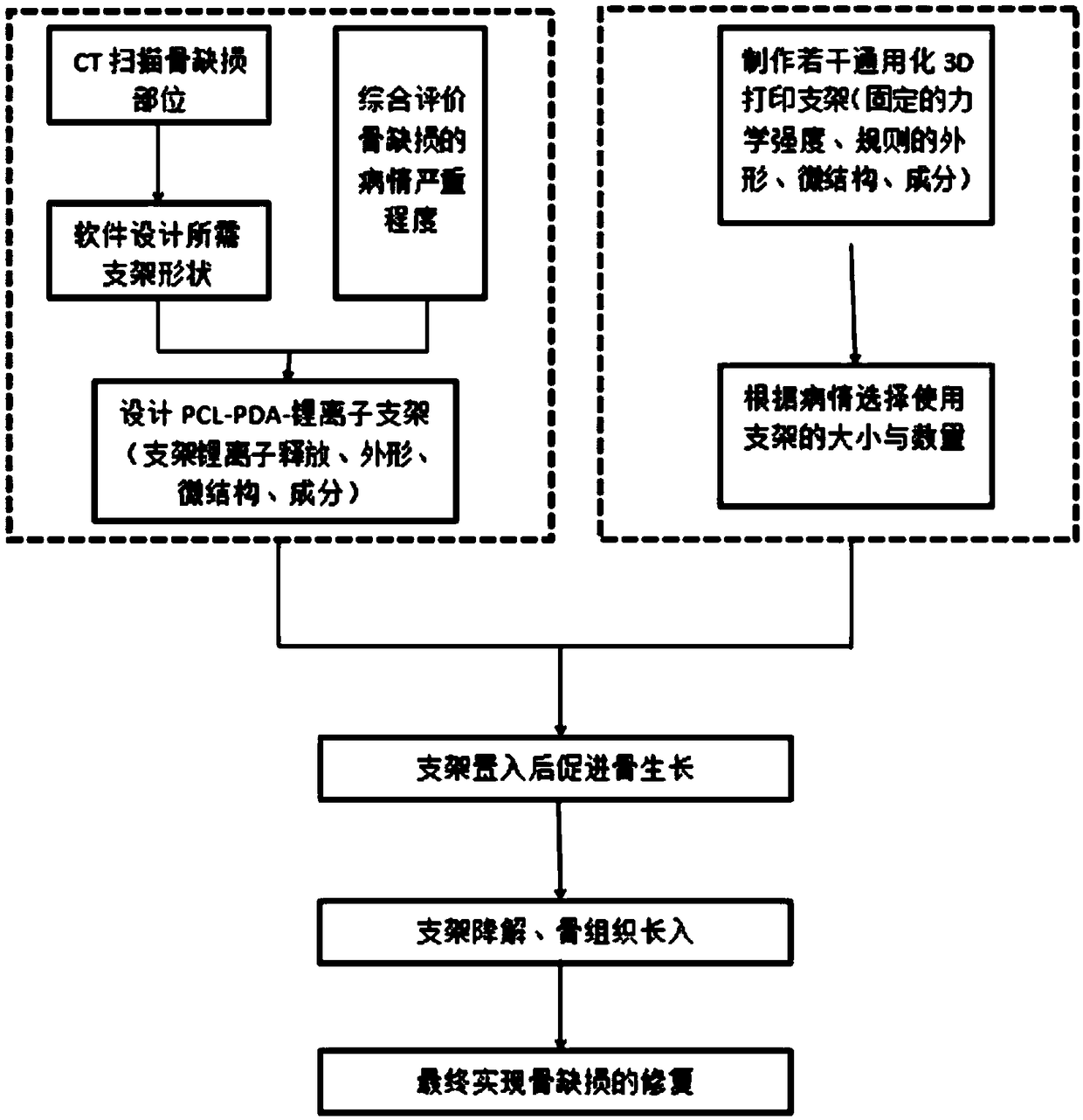3D printed PCL-PDA-lithium ion bone repair tissue engineering scaffold and preparation method thereof
A tissue engineering scaffold and 3D printing technology, applied in the field of bioengineered human implants, can solve the problems of pathogen transmission, repeated large-scale use, and inability to participate in human metabolism
- Summary
- Abstract
- Description
- Claims
- Application Information
AI Technical Summary
Problems solved by technology
Method used
Image
Examples
Embodiment 1
[0043] 1. Preparation of 3D printed PCL scaffolds
[0044] The PCL is heated to 100°C through the heating system of Fused Deposition Modeling (FDM) 3D printing to become liquid. Extrude the molded fiber bundles, and obtain 3D printing products through splicing structures of different levels and angles of the fiber bundles ( figure 2 ).
[0045] 2. Preparation of 3D printed PCL-PDA scaffold
[0046] After the scaffold PCL structure is constructed by 3D printing, the surface is modified with PDA. The specific steps include:
[0047] 1) preparation concentration is the hydrochloric acid (HCL) solution of 0.5mol / L;
[0048] 2) Weigh Tris and add it to 500ml of water to dissolve, after stirring, add the prepared 0.5mol / L HCL solution dropwise to adjust to pH = 8.5, and prepare Tris-HCL solution for later use;
[0049] 3) Dopamine (Dopamine, DA) was dissolved in the above 150ml Tris-HCL solution, stirred and dissolved, and prepared as DA-Tris-HCL solution, the concentration of ...
PUM
 Login to View More
Login to View More Abstract
Description
Claims
Application Information
 Login to View More
Login to View More - R&D
- Intellectual Property
- Life Sciences
- Materials
- Tech Scout
- Unparalleled Data Quality
- Higher Quality Content
- 60% Fewer Hallucinations
Browse by: Latest US Patents, China's latest patents, Technical Efficacy Thesaurus, Application Domain, Technology Topic, Popular Technical Reports.
© 2025 PatSnap. All rights reserved.Legal|Privacy policy|Modern Slavery Act Transparency Statement|Sitemap|About US| Contact US: help@patsnap.com



